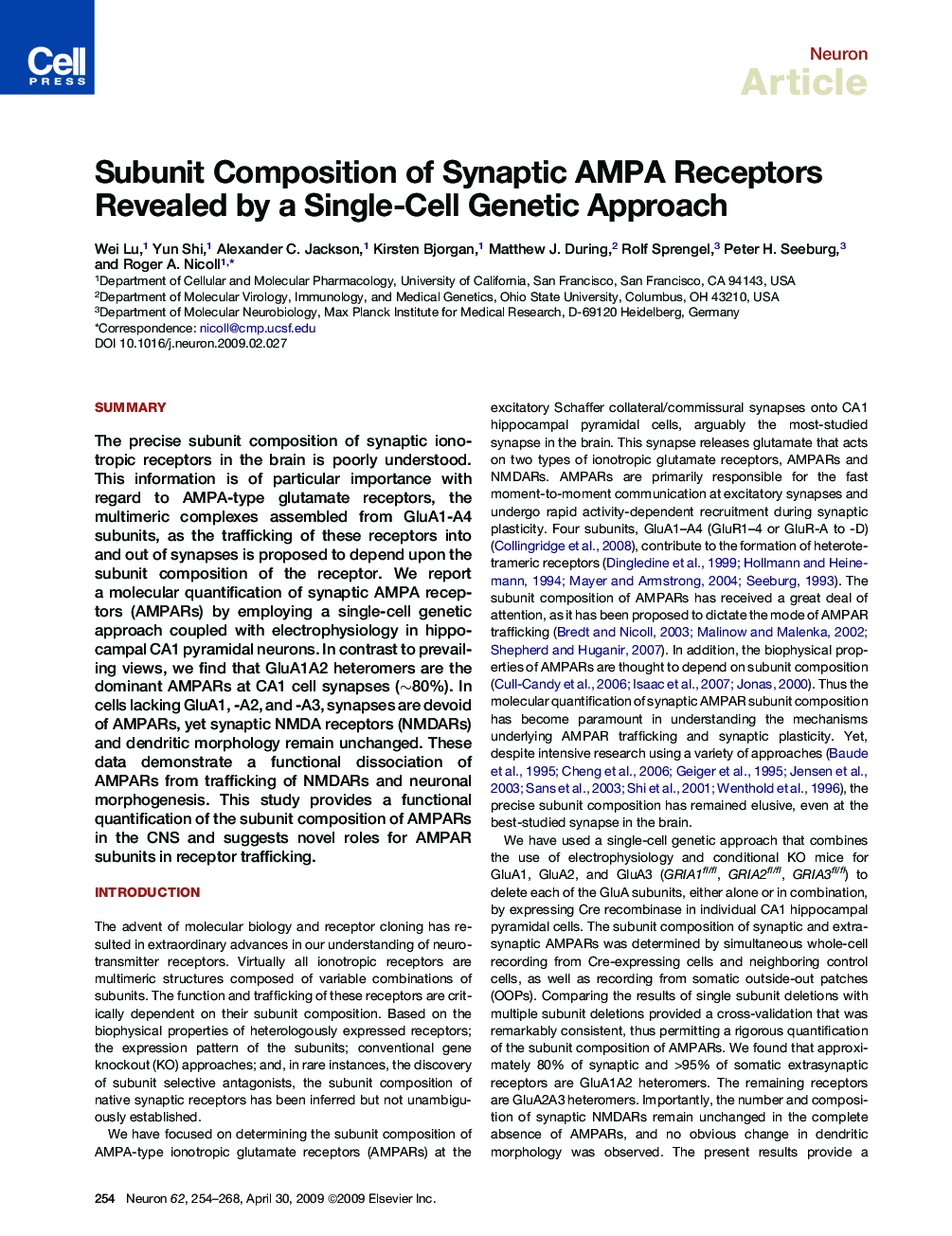| Article ID | Journal | Published Year | Pages | File Type |
|---|---|---|---|---|
| 4322089 | Neuron | 2009 | 15 Pages |
SummaryThe precise subunit composition of synaptic ionotropic receptors in the brain is poorly understood. This information is of particular importance with regard to AMPA-type glutamate receptors, the multimeric complexes assembled from GluA1-A4 subunits, as the trafficking of these receptors into and out of synapses is proposed to depend upon the subunit composition of the receptor. We report a molecular quantification of synaptic AMPA receptors (AMPARs) by employing a single-cell genetic approach coupled with electrophysiology in hippocampal CA1 pyramidal neurons. In contrast to prevailing views, we find that GluA1A2 heteromers are the dominant AMPARs at CA1 cell synapses (∼80%). In cells lacking GluA1, -A2, and -A3, synapses are devoid of AMPARs, yet synaptic NMDA receptors (NMDARs) and dendritic morphology remain unchanged. These data demonstrate a functional dissociation of AMPARs from trafficking of NMDARs and neuronal morphogenesis. This study provides a functional quantification of the subunit composition of AMPARs in the CNS and suggests novel roles for AMPAR subunits in receptor trafficking.
